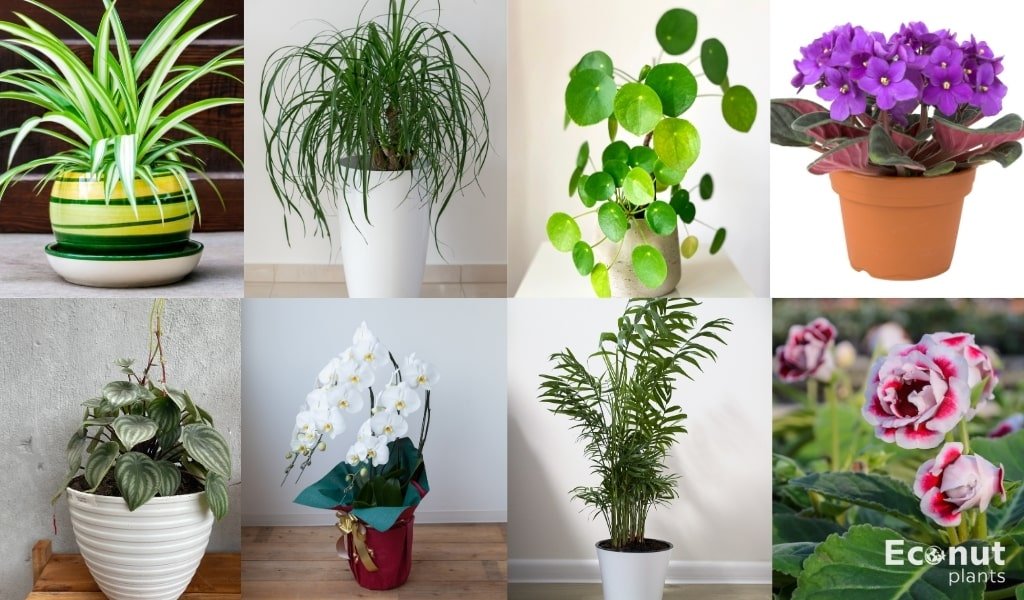There are many house plants that are Pet Friendly Houseplants and completely non-toxic to dog. Many species can be toxic to animals such as cats and dogs or “pet friends“. However, it’s important to remember that it’s best to keep all houseplants out of reach as much as possible to keep them healthy, happy and tidy.
By being aware of the ideal pet and plant pairing, you can ensure the safety of both animals and plants. Protecting cats and dogs, these non-toxic plants will enhance home with colour and texture and last with little maintenance
10 Best Pet Friendly Houseplants
Many species can be toxic to animals such as cats and dogs or “furry friends“. Pets are unpredictable, and you never know when they might want to nibble on a leaf or two from prized houseplant. There are several pet-friendly houseplants that you should be aware of since they offer a variety of good effects on home.
1. Baby’s tears

Botanical Name: Soleirolia soleirolii
Baby’s tears are a tropical perennial with many small leaflets that form a mat. A thick, delicate mat of finely rounded or bean-shaped leaves on short, fleshy stems distinguishes baby’s tears. Baby’s-tears plants are easy to grow, but they require constant care to keep them looking their best.
It grows well in low-light environments and is widely used in terrariums and mixed containers. It is grown outdoors in warmer regions as an evergreen ground cover or as a filler plant for rock gardens. If planted outdoors in cold climates, it is an annual that dies back as winter approaches. In spring, this fast-growing plant is easy to grow from a potted nursery plant. In warm, tropical climates, it is an invasive plant.
2. Spider Plant

Botanical Name: Chlorophytum comosum
Due to their ease of maintenance, spider plants are renowned as “unkillable” houseplants. This plant produces spiky-looking leaves and, on rare occasions, small white flowers. This pet-friendly houseplant can withstand droughts, requires well-draining soil, and does best in direct sunlight.
Their subtle green and white foliage complements any interior design. You are allowed to keep spider plant potted and set it on any surface in house, but some people enjoy hanging baskets to watch its fronds extend outward.
Know more: Spider Plant (Chlorophytum)
3. Gloxinia
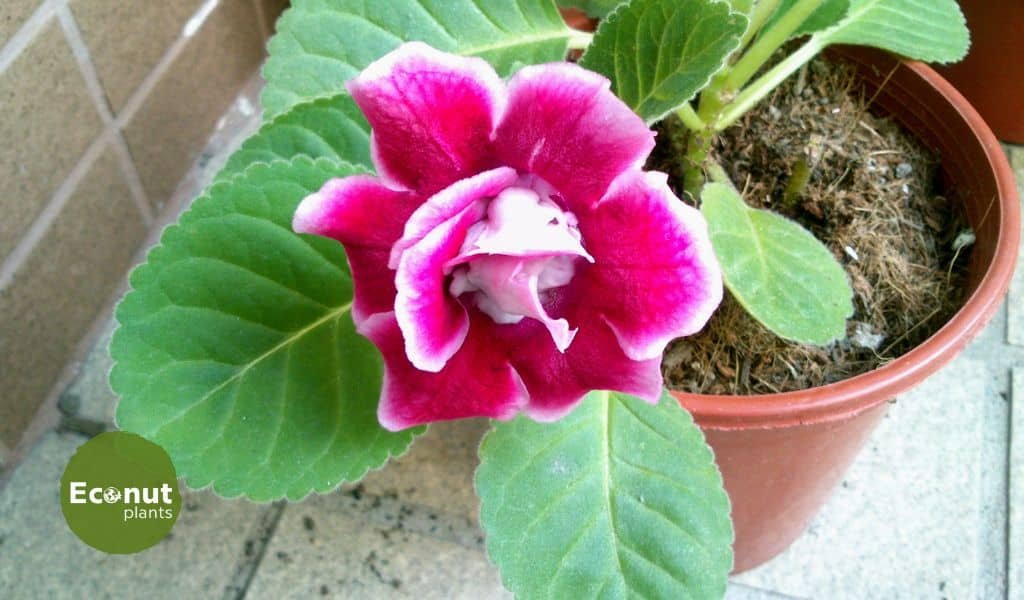
Botanical name: Siningia
Gloxinias are not difficult to grow, and if you can grow African violets, you can grow gloxinias. Outside of their hardiness zone, they can be planted outdoors in the spring. Find a bright window and these flowers will bloom in vibrant purple, pink, red, or blue.
For best health, keep the soil wet and give these blooms liquid plant food every two weeks. Temperatures between 71 and 75 degrees F are ideal for these flowers. Allow them to sit in bright, indirect sunlight for three weeks, and the seeds should germinate.
4. Peperomia

Botanical name: Peperomia spp.
Peperomia plants come in a wide range of forms, sizes, and colors, so you can find the perfect plant for space. This plant is one of the easiest houseplants to care for because it doesn’t mind low light conditions, doesn’t need a lot of water, and can be small enough to fit anywhere.
Because their leaves are striped with light and dark green, they can resemble the outer part of a watermelon. This pet-friendly plant also prefers humid conditions! This plant will be an excellent option for the bathroom.
5. African violets
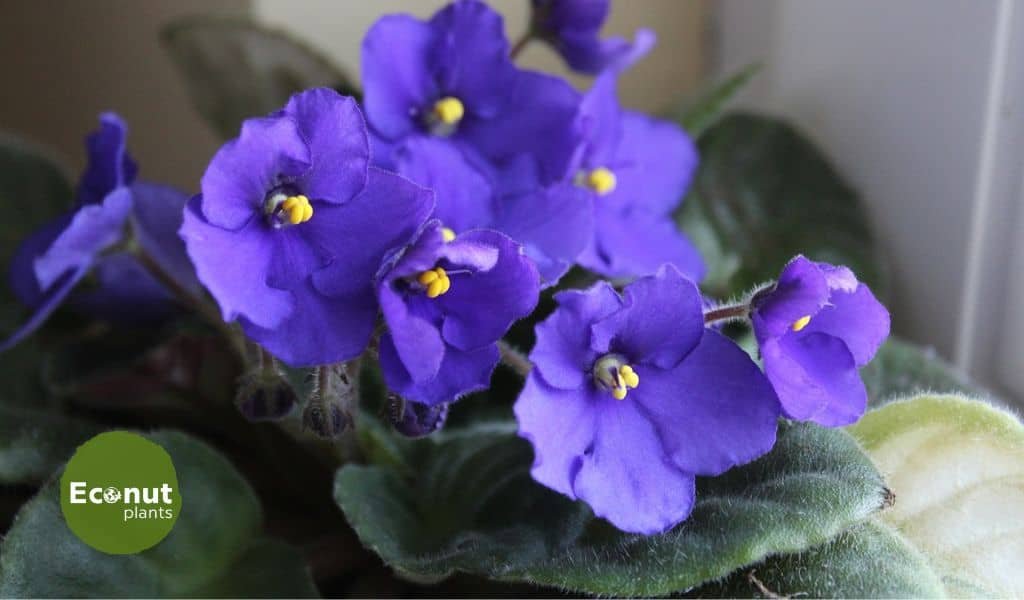
Botanical name: Saintpaulia ionantha
African violets are the most popular houseplants in the world. These compact, low-growing plants bloom several times a year and come in a variety of leaf shapes and colors. African violets have thick, fuzzy leaves and violet-like blooms that bloom slightly above the evergreen foliage. African violets are non-toxic to animals.
These flowers would be a nice, bright accent to an open shelf in kitchen. They will blossom wonderfully in shady sunshine. When they’re newborns, these flowers flourish in temperatures ranging from 73 to 77 degrees Fahrenheit, but adult plants can tolerate temperatures as low as 68 degrees. They will require a modest amount of watering. Fertilize them on a regular basis because they can bloom all year.
6. Parlor palm
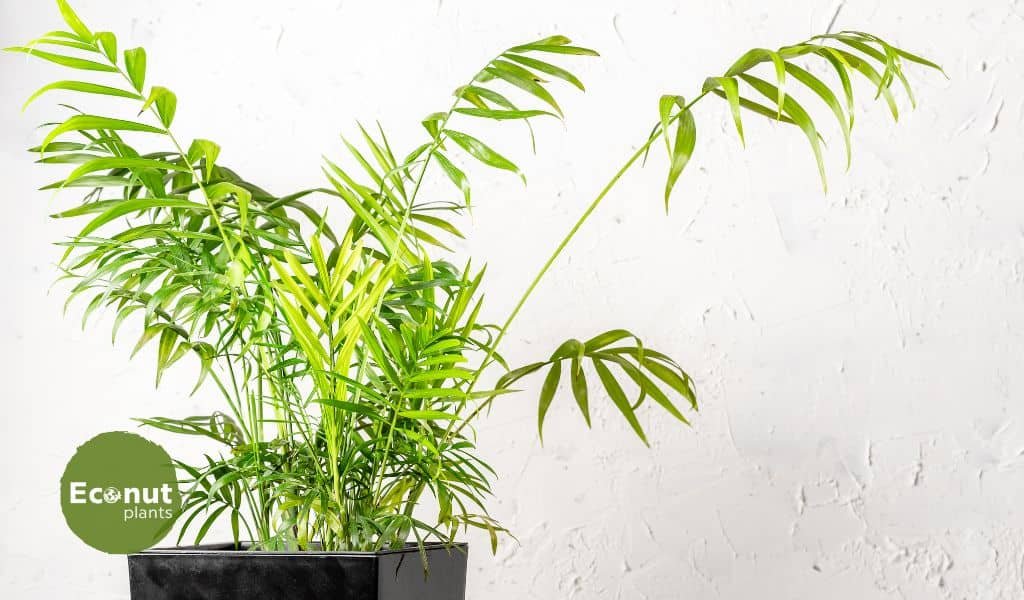
Botanical Name: Chamaedorea elegans
Chamaedorea elegans, popularly known as Nianthe bella parlor palm Parlor palms are native to tropical and subtropical climates in the Americas. Parlor palms can grow over six feet tall with proper care and several repotting. However, do not repot for more than 2-3 years, as they do not like to disturb their roots.
This palm species has been cultivated since Victorian times and is prized for its resistance to indoor conditions and constant habituation. This palm is also known as the bamboo palm because of its bamboo-like stems that spread like bamboo. The parlor palm is a beautiful indoor plant that is easy to care for and thrives.
7. Ponytail Palm
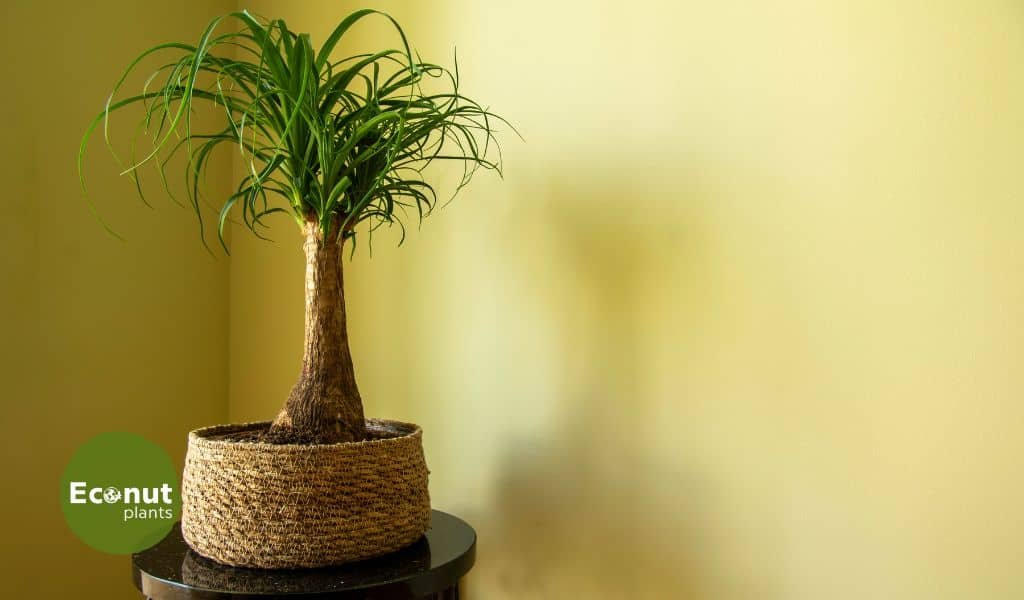
Botanical name: Beaucarnea recurvata
They grow a ponytail of grassy green leaves from their stout stems. As they cascade, their leaves twist and curl like human hair. These pet-friendly houseplants are very simple to cultivate and require little maintenance.
Ponytail palms like to stay dry and only sometimes need water. However, they can tolerate sporadic, bright, direct sunlight and well-draining soil conditions. They enjoy bright, indirect sunlight. Ponytail palms may be kept indoors as houseplants without endangering pets, and they make excellent accent or focus plants in any room of house.
8. Orchid
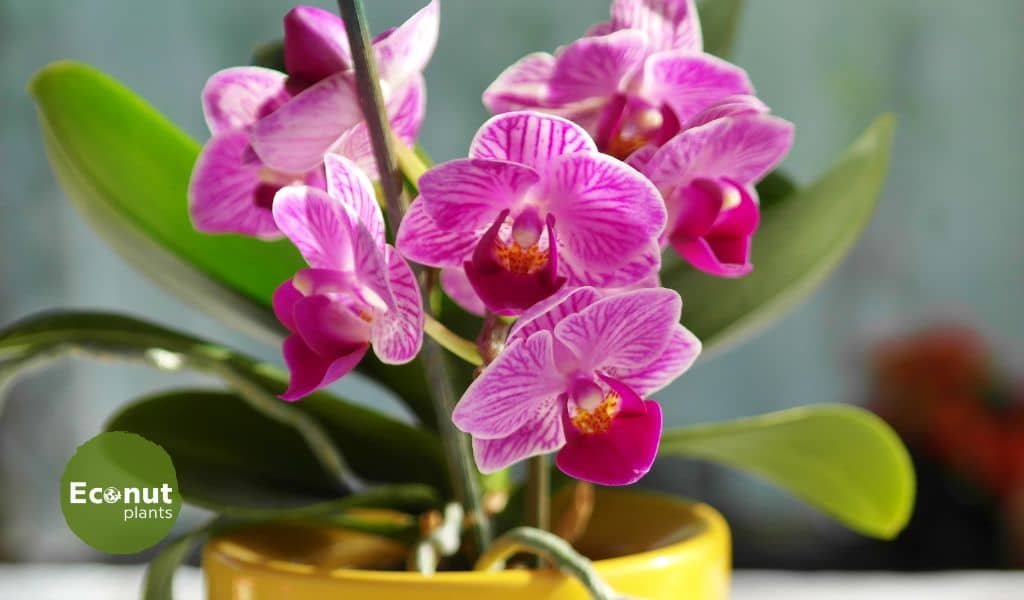
Botanical name: Orchidaceae
Orchids are popular indoor houseplants that may be grown at any time; however, repotting is preferable after flowering. Beginner orchid care is quite simple, as long as you grasp the plant’s optimal circumstances and maintenance requirements. Their petals and sepals are usually seen in threes.
While there are various orchid species to pick from, their morphological qualities are always the same. Orchids are easily identified by their tall, gently curved stalks covered in solid or speckled blossoms. The petals of an orchid can have ruffled or notched edges, depending on the varietal. Some orchid species develop quicker than others, but in general, they grow slowly.
Know more: Orchid Plant (Dendrobium)
9. Venus flytrap

Botanical name: Dionaea muscipula
The Venus flytrap plant is not only pet-friendly, but it is also extremely low-maintenance. Place Venus flytrap somewhere that gets at least four hours of direct sunlight a day and hydrate it with distilled water to keep it happy. Placing the plant on a porch is good since it can feed on passing insects. It simply needs one to two insects every month to survive.
Venus flytraps demand pure water; therefore, in addition to distilled water, reverse osmosis or rainfall should work well. It’s also a good idea not to let plant dry out; the soil surrounding its base should be wet to the touch.
10. Chinese money plant
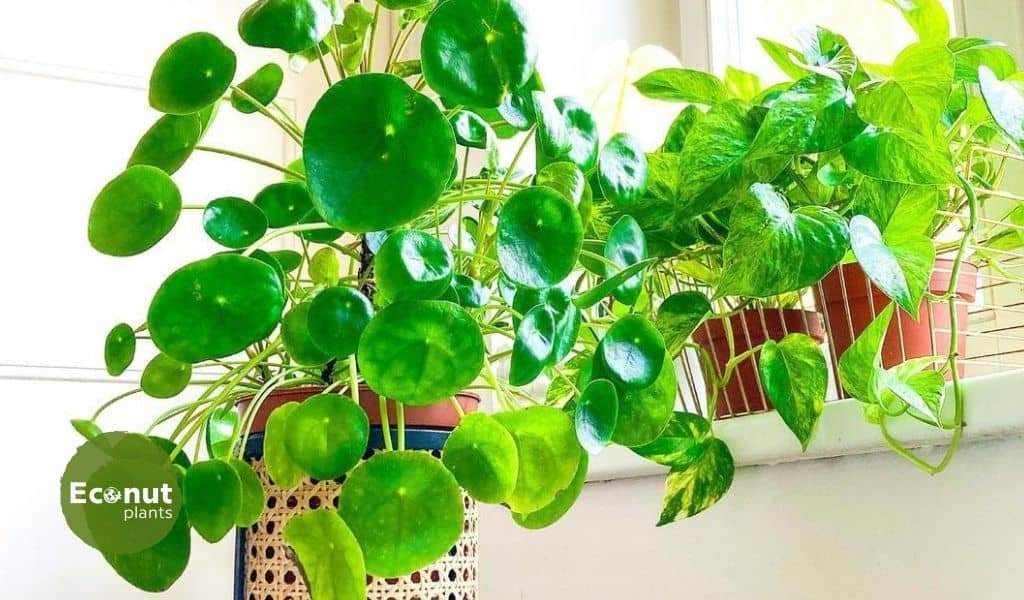
Botanical name: Pilea peperomioides
This popular plant is easy to care for, and best of all, it is completely pet-safe. This gorgeous plant, native to the southern Chinese regions of Yunnan and Sichuan, is believed to bring prosperity and good luck to its owner because of its enormous, rounded leaves that resemble coins at the top.
Finding the right location for the Chinese money plant in home is important for its healthy growth. These deep green leafy beauties love the sun, but will burn if placed in direct sunlight. This gorgeous plant requires minimal water but hates drying out in a wet planter, from which it can be difficult to recover.
If you are searching fresh and live houseplants online then checkout our extensive collection of amazing indoor and outdoor houseplants.
I hope you enjoyed reading The 10 Best Pet-Friendly Houseplants for the Home Garden Planting Guide. If you think we have forgotten something or have a suggestion, please leave it in the comment section below.

